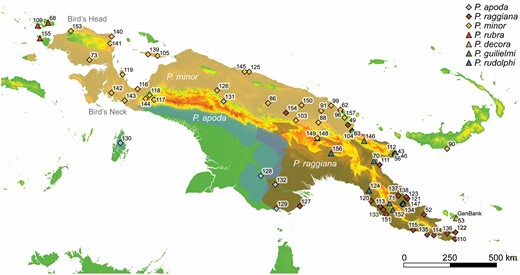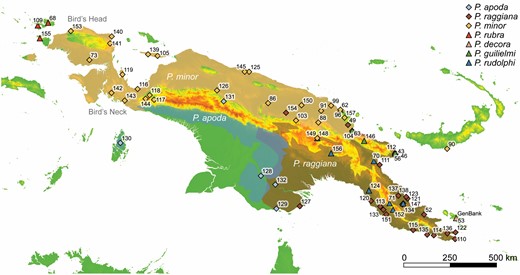l_raty
laurent raty
Ligon, Diaz, Morano, Troscianko, Stevens, Moskeland, Laman, Scholes. 2018. Evolution of correlated complexity in the radically different courtship signals of birds-of-paradise.
[BioRxiv preprint]
keywords: ornament, complexity, behavioral analyses, sensory ecology, phenotypic radiation
Ornaments used in courtship often vary wildly among species, reflecting the evolutionary interplay between mate preference functions and the constraints imposed by natural selection. Consequently, understanding the evolutionary dynamics responsible for ornament diversification has been a longstanding challenge in evolutionary biology. However, comparing radically different ornaments across species, as well as different classes of ornaments within species, is a profound challenge to understanding diversification of sexual signals. Using novel methods and a unique natural history dataset, we explore evolutionary patterns of ornament evolution in a group – the birds-of-paradise – exhibiting dramatic phenotypic diversification widely assumed to be driven by sexual selection. Rather than the tradeoff between ornament types originally envisioned by Darwin and Wallace, we found positive correlations among cross-modal (visual/acoustic) signals indicating functional integration of ornamental traits into a composite unit – the courtship phenotype. Furthermore, given the broad theoretical and empirical support for the idea that systemic robustness – functional overlap and interdependency – promotes evolutionary innovation, we posit that birds-of-paradise have radiated extensively through ornamental phenotype space as a consequence of the robustness in the courtship phenotype that we document at a phylogenetic scale. We suggest that the degree of robustness in courtship phenotypes among taxa can provide new insights into the relative influence of sexual and natural selection on phenotypic radiations.
[BioRxiv preprint]
keywords: ornament, complexity, behavioral analyses, sensory ecology, phenotypic radiation
Ornaments used in courtship often vary wildly among species, reflecting the evolutionary interplay between mate preference functions and the constraints imposed by natural selection. Consequently, understanding the evolutionary dynamics responsible for ornament diversification has been a longstanding challenge in evolutionary biology. However, comparing radically different ornaments across species, as well as different classes of ornaments within species, is a profound challenge to understanding diversification of sexual signals. Using novel methods and a unique natural history dataset, we explore evolutionary patterns of ornament evolution in a group – the birds-of-paradise – exhibiting dramatic phenotypic diversification widely assumed to be driven by sexual selection. Rather than the tradeoff between ornament types originally envisioned by Darwin and Wallace, we found positive correlations among cross-modal (visual/acoustic) signals indicating functional integration of ornamental traits into a composite unit – the courtship phenotype. Furthermore, given the broad theoretical and empirical support for the idea that systemic robustness – functional overlap and interdependency – promotes evolutionary innovation, we posit that birds-of-paradise have radiated extensively through ornamental phenotype space as a consequence of the robustness in the courtship phenotype that we document at a phylogenetic scale. We suggest that the degree of robustness in courtship phenotypes among taxa can provide new insights into the relative influence of sexual and natural selection on phenotypic radiations.













